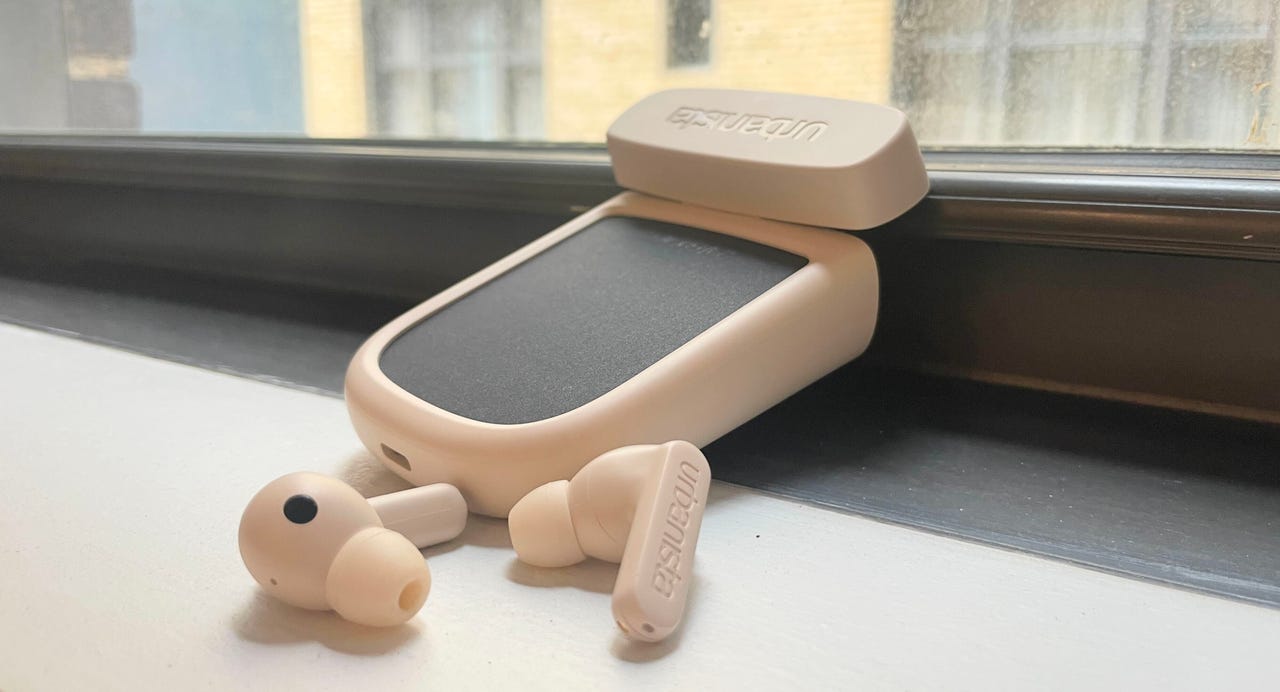These solar-powered earbuds are a pocket full of sunshine

Almost two years ago Swedish audio company, Urbanista, released the first ever solar-powered over-ear headphones: The Urbanista Los Angeles. Last August, Urbanista consolidated Powerfoyle solar cell technology into earbuds: The Urbanista Phoenix. Named after the “valley of the sun”, the Urbanista Phoenix case continuously charges via natural or ambient sunlight exposure.
Also: The best earbuds you can buy right now
For an enthusiastic earbud wearer like me, the prospect of a charging case that relies on a constant energy source in the sky rather than requiring yet another charging cable sounded great. And after testing, I can say the Urbanista Phoenix buds are truly a pocket full of sunshine when it comes to charging nuances. They also deliver solid quality, even if they soak up a little too much warmth when it comes to sound signature.
A big case for solar power
Equipped with a pad of Exegar Powerfoyle solar tech on its front, the Urbanista Phoenix's case is bigger and heavier than most sleek cases from the likes of Apple and Samsung. The 90 x 68 x 20 mm case officially dethrones the Bose QuietComfort II title for clunkiest case. While it fit in the pocket of my work bag, it awkwardly juts out of my back pants pocket and isn't possible to squeeze into a front pocket. Despite its large size, the case is impressively lightweight. Urbanista also offers the unit in black, but I personally think the dusty rose color I received adds to the sunny aesthetic.
The case still charged despite the snowy, overcast weather in NYC, giving me a few hours of extra playing time. Christina Darby/ZDNET
Ditch the lightning charger, and charge by light
When it comes to charging efficacy, I was impressed. Of course, the case responds better to direct sun exposure, but it still charged on a cloudy day. It also charges through indoor lighting as well. While it was a bit finicky charging with just my overhead lights, putting it under my Halo Rise reading light worked just as well as stepping outside.
When your buds are docked and the case is open, you can see how much solar power your case is actively getting or has received throughout the day. Screenshot by Christina Darby/ZDNET
Read the Amazon Halo Rise review: A sleep-tracking nearable to replace your clumsy wearable
The Urbanista app makes it easy to access and check how much solar power you've accumulated and make adjustments accordingly. My only call out here is that both earbuds have to be docked inside the case with the lid remaining open to check.
While sunlight charging is impressive, it does take a bit longer than an average outlet charge. In case you need a quick charge or top-up, the case is equipped with a USB-C port and a cord for backup power.
A fittingly sunny sound signature
The Urbanista's Phoenix earbuds are solid, equipped with all the solid specs, including a 10mm dynamic driver and Bluetooth 5.2 multiple connectivity. But if you're an audiophile, I should warn you that the ANC is more like noise-masking that completely canceling, especially compared to others on the market.
As far as frequency and sound quality mix, they're consistent, with the only “downside” being an overall sonic signature that errs on the very warm, bassy side. As I was testing, I thought it was only appropriate to listen to Lorde's “Solar Power,” Harry Styles' “Daylight,” and “Sunshine on my Shoulders” by John Denver. Sorry, not sorry.
While the headphones sounded relatively stable on the pop songs, the production elements and subtle synths served a more cohesive sound than earbuds that prioritize instrumentals — which isn't necessarily a bad thing. However, that quality didn't do Denver's folky falsetto justice; rather it made his voice sound grainy and muffled on the higher notes.
Also: Bowers & Wilkins' Pi7 S2 are music to my ears, but there's a catch
My biggest quality qualm is that in transparency mode there's a low static that layers over the sound. It's noticeable at first, but after a few minutes of listening, it merely becomes what it is: background.
The case doesn't always pick up my ambient overhead lighting, but it charges well when underneath my Amazon Halo reading light. Multi-tasking at its finest. Christina Darby/ZDNET
Comfort and fit
The buds are, like the case, lightweight. Unlike the case, they're on the smaller side with shorter stems and an emphasis on a wider in-ear bulb. Putting them in your ears requires a bit of a “twist and lock,” to get them to fit snugly within the ear, but they do a good job at staying in place…almost too good. As someone with smaller ears, I was surprised at how tight these buds felt against my ear canals. When I sized up to the “medium” silicone tip, the pressure mostly subsided, but they do present a more “clunky” than sleek feel.
Bottom Line
While audiophiles may look for more refined earbuds, these rugged, yet solid, solar-powered earbuds are stacked with the usual earbuds accouterments like on-stem touch controls and multiple connectivity. The $149 price tag might suggest they're an AirPods or Galaxy Buds alternative, but I'd see it more as a renewable energy audio bundle. Plus, a case that requires a few rays to charge may remind you to get some fresh air as the warmer months approach.

